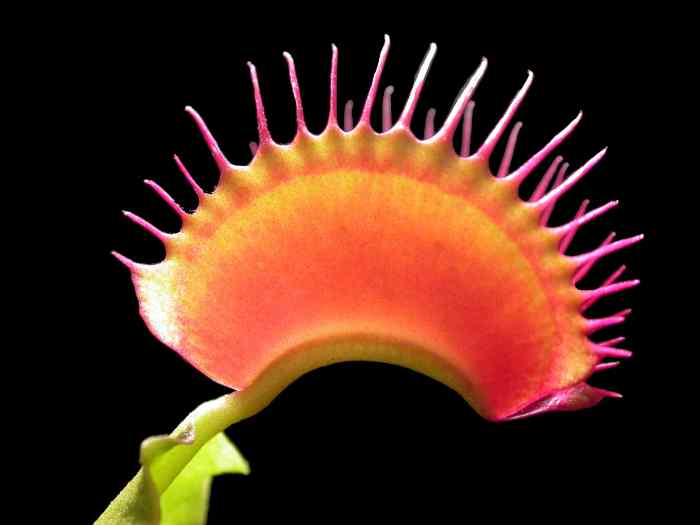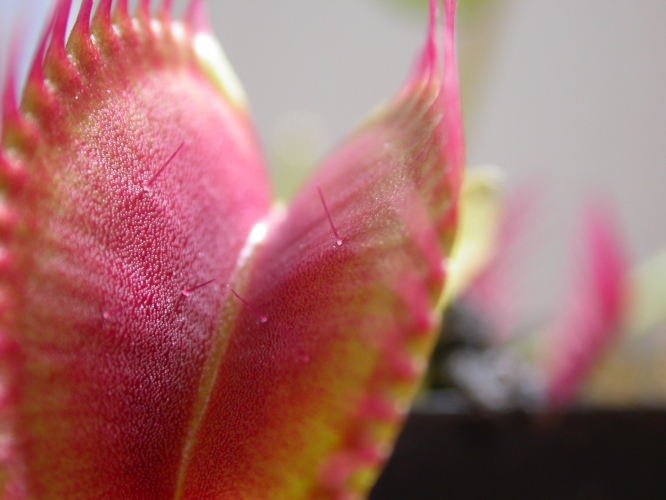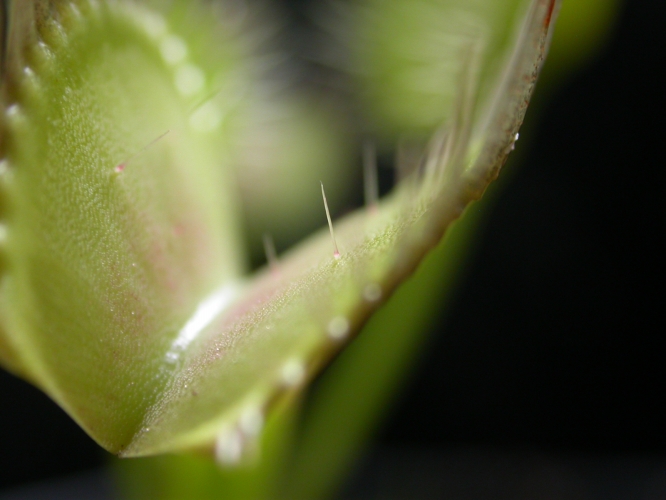 Dionaea muscipula
Dionaea muscipula

The plant is a small herb, forming a rosette of four to ten leaves, which arise from a short subterranean stem which is actually a bulb-like rhizome. Each leaf reaches a maximum size of about three to seven cm, depending on the time of year; longer leaves with robust traps are generally formed after flowering. Flytraps that appear to have more leaves are generally colonies, formed by rosettes that have divided beneath the ground.
Venus Flytraps are popular as cultivated plants, although they have a reputation for being 'difficult'. Much of this reputation is due to inappropriate treatment of the plants by retailers and their consequent ill-health on purchase.
Although a greenhouse is the ideal growing environment, Venus Flytraps can also be grown on a windowsill if a few requirements are respected.
The ideal soil is a mix of sand and sphagnum moss, or sphagnum alone. Soil pH should be in the range of 4.0 to 4.5.
They thrive with at least a few hours of direct sunlight daily. However, hot sun combined with low humidity can kill a weak Venus Flytrap fresh out of tissue culture. Insufficient light can lead to long, thin leaves that lack red coloring in the traps.
Venus Flytraps must not be watered with tap water; accumulated salts cause most carnivorous plants — including Venus Flytraps — to die. Distilled water, clean rain water, or water that has been artificially acidified with sulfuric acid should be used instead. The soil should be kept constantly moist (and the humidity high) by placing the pot in a tray full of water. There is no danger of over-watering. Venus Flytraps have been known to live underwater for weeks at a time.
Some horticulturists have experimented with giving small amounts of fertilizer to Venus Flytraps, usually applying diluted solutions of products formulated for epiphytes, using cotton swabs, to the plant's foliage. Beginners, however, and those without expendable plants, would be wise to avoid fertilizer in favor of insects.
Growers should resist the temptation to trigger the traps manually, whether by poking them or by feeding them food such as hamburger, which will rot traps due to high fat content. Venus Flytraps are entirely capable of catching their own food; thus, feeding them manually is not necessary. The plants do not require insects and can thrive without eating at all. If for some reason a grower wishes to feed a flytrap, live insects no larger than 1/3 of the size of the trap may be used. Algal growth near the plant is an indicator of overfeeding.
Healthy Venus Flytraps will produce scapes of white flowers in spring; however, growers may wish to pinch these out, as flowering consumes some of the plant's energy, and reduces the rate of trap production. If left to flower, successful pollination will result in the production of dozens of small, shiny black seeds. These require stratification to germinate.
In winter, wild Venus Flytraps will become dormant. If one lives in an area with chilly, but not freezing, winters (similar to the plant's natural habitat in North Carolina), they can be placed outside in a cool area protected from frost. The soil should be kept slightly moist and the area well ventilated to prevent the growth of grey mold.
Plants can be propagated by seed, although seedlings will take several years to mature. More commonly, they may be propagated by division in spring.

